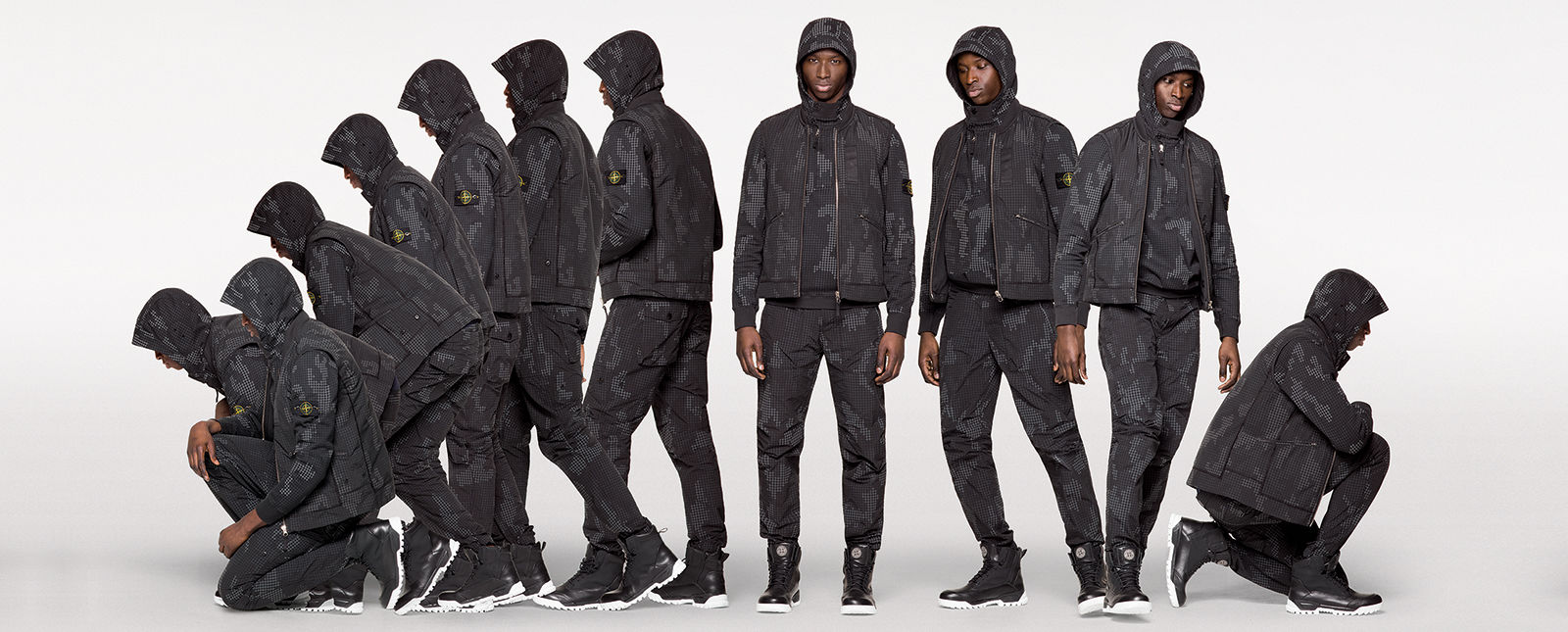
Every day I see multiple fake Stone Island products online, and even more scarily; the fakes are getting better by the day.
So you might be thinking, “why not just buy the fake if it’s so much cheaper and you can hardly tell the difference?”
Well, for starters, there are many security features and design features that counterfeiters simply cannot replicate. (I’ll go over those later). For starters, counterfeiting is illegal and very frowned upon, and if you really appreciated stone island as a brand you wouldn’t purchase a fake anyways. Funds from sources such as counterfeiting usually go towards other illegal activities in third world countries such as human and drug trafficking. Is that really something you want to be funding?
How to spot a fake
The badge

The top is real, the bottom is fake.
A few things you can notice just from the picture above is that the stitching on the top badge is stitched much better, and the border is much neater and slimmer. The yellow stitching around the button holes is much wider. If the badge hole is rectangular it is 100% fake. They can’t effectively replicate this stitching.
Certilogo
The certilogo was introduced in 2014 as a way to combat these fakes.

Example of what one could look like.
If you type the 12 digit code into the certilogo website, answer a few questions, and it will tell you whether your product is authentic or fake. It’s as simple as that. Counterfeiters can’t generate valid codes.
Older versions
Old versions of the tags look like this. You’ve got to check out the art number (found on the tag) and the quality of the badge.
How it works:
The first two numbers let you know the year and season when the item was made.
Even numbers = Spring/Summer range
Odd numbers = Autumn/Winter range
| Year | Art No. | Year | Art No. | Year | Art No. | Year | Art No. |
| 1990 | 12/13 | 1997 | 26/27 | 2004 | 40/41 | 2011 | 54/55 |
| 1991 | 14/15 | 1998 | 28/29 | 2005 | 42/43 | 2012 | 56/57 |
| 1992 | 16/17 | 1999 | 30/31 | 2006 | 44/45 | 2013 | 58/59 |
| 1993 | 18/19 | 2000 | 32/33 | 2007 | 46/47 | 2014 | 60/61 |
| 1994 | 20/21 | 2001 | 34/35 | 2008 | 48/49 | 2015 | 62/63 |
| 1995 | 22/23 | 2002 | 36/37 | 2009 | 50/51 | 2016 | 64/65 |
| 1996 | 24/25 | 2003 | 38/39 | 2010 | 52/53 | 2017 | 66/67 |
In example (1), the two numbers are 49, meaning it’s an Autumn/Winter item from 2008. Then for example (2), the two numbers are 28 meaning it’s an Spring/summer item from 1998.
The next two number show you the brand they come under:
13 – CP under 16
14 – Stone Island Denim
15 – Stone Island
16 – Stone Island Junior
18 – CP Company
20 – CP Donna
In both cases, you can see on the labels, 15, meaning it is Stone Island
The fifth number shows the type of item:
0 – Leather
1 – Shirts
2 – T-Shirts
4 – Shoulder Pieces
5 – Knitwear
6 – Sweatshirts
7 – Long Coats
8 – Suit
9 – Bags/Hats/Accessories
A – Jacket/Blazer
B – Swimming Trunks
G – Waistcoat
L – Bermuda Shorts
M – Jacket
S – Shoes
The buttons and zips

An example of real Stone Island buttons.
The buttons should always have Stone Island printed around them unless it is a really old piece. The centre should be a cross, not 4 holes which you see on a lot of fakes. However, this doesn’t apply to certain pieces. The zips will usually be manufactured by a reputable brand such as YKK or Lampo or feature the brands name and logo printed on them. This is true for most items. If you have the item in hand, make sure the zips feel good quality and as if they’re made to last. If they feel cheap it could be a counterfeit.
The seller
Finally, when buying a Stone Island piece, be conscious of where you’re buying from. Stay clear of unfamiliar vendors or websites named “stoneisland-sale.com” for example. And just remember that if it seems too good to be true it probably is!
